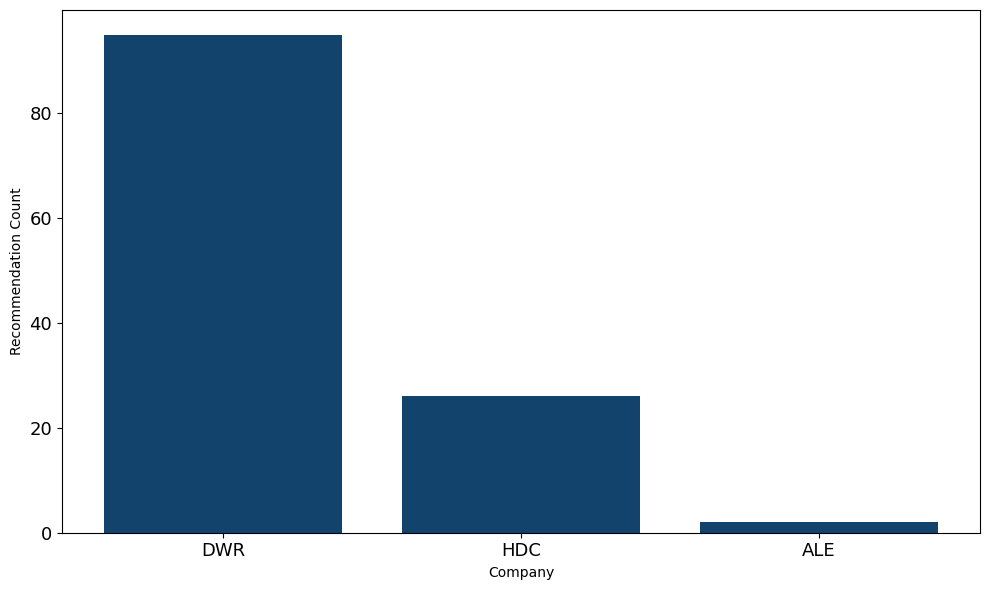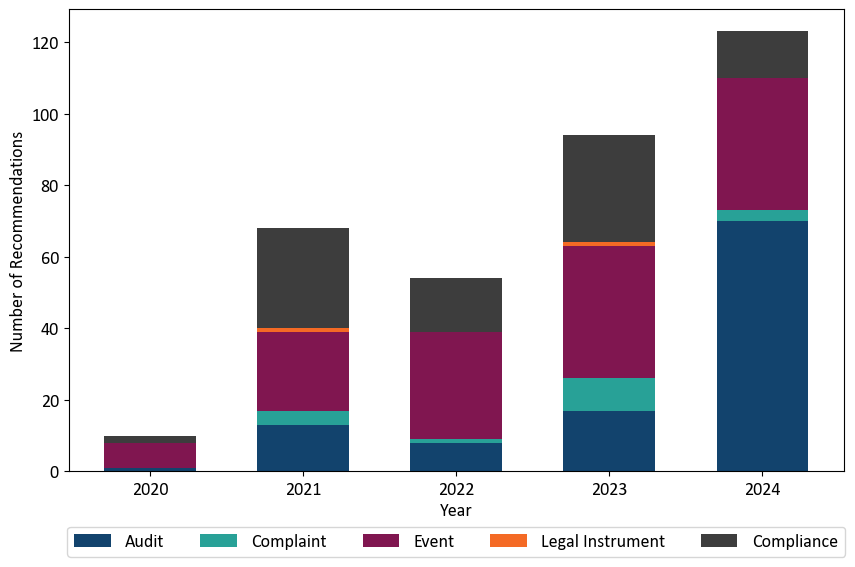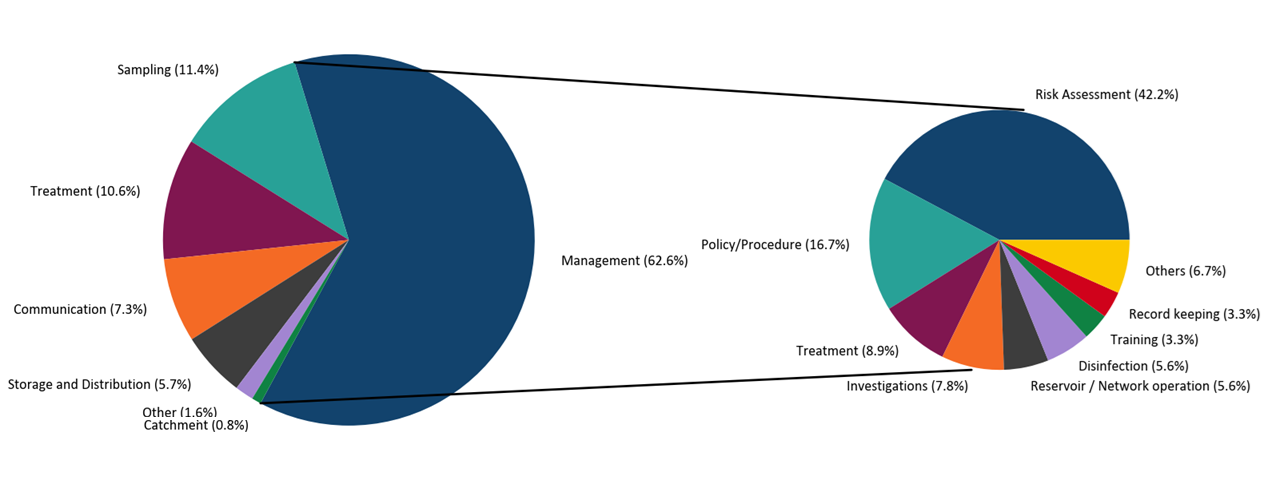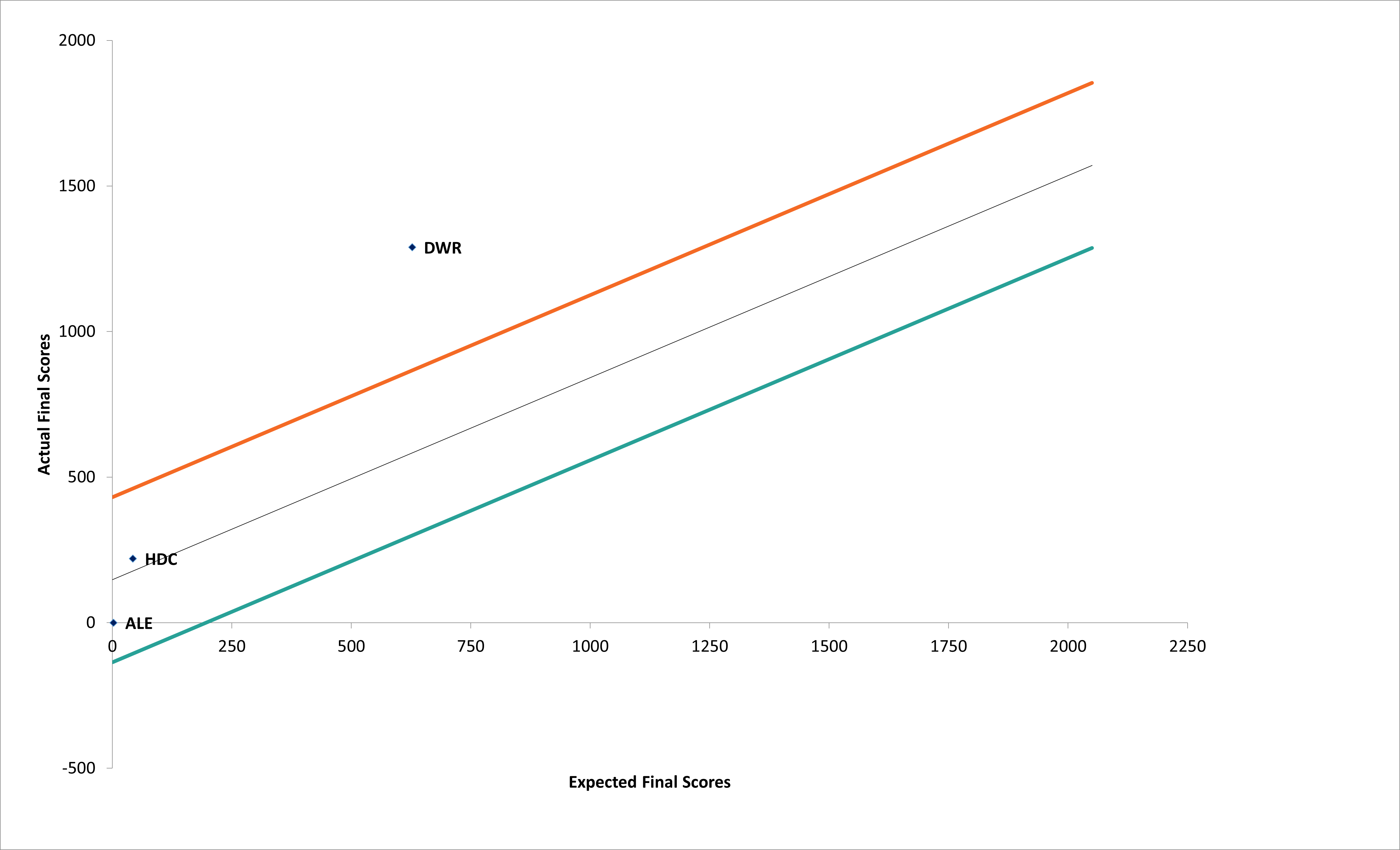- Drinking Water 2024 – Summary of the Chief Inspector’s report for drinking water in Wales
- Foreword
- Water supplies and testing
- Compliance with standards
- Learning from compliance failures
- Learning from events
- Consumer contacts
- Asset health
- Water safety planning and risk assessment
- Raw water
- Poly and perfluoroalkyl substances (PFAS)
- Audit programme
- Recommendations
- Enforcement
- SEMD
- NIS
- Materials in contact with drinking water (Regulation 31)
- Research publications
- Whistleblowers
- Working with stakeholders
- Annex A – Number of tests carried out by companies
- Annex B – Compliance with standards
- Annex C – Compliance failures and events
Recommendations
If a regulatory breach occurs or seems likely, and an Inspector cannot determine that the occurrence will not happen again, they must issue a formal recommendation to the company. These recommendations serve to highlight areas where companies can improve compliance with the Regulations. Each recommendation is tracked to assess its significance and the company’s response. This regulatory strategy aims to pinpoint companies at risk of regulatory failure that could increase residual risk to the drinking water supply, ensuring necessary improvements are made.
Inspectors made 123 recommendations in 2024. See Figure 34. Dŵr Cymru Welsh Water entered into transformation in June 2024. In the months leading up to this, the Inspectorate conducted a comprehensive review of the company’s data, information, and performance over the previous three years to support its decision. By the time the company’s position was confirmed, the Inspectorate had already devised plans to enhance its regulatory activities, which would accelerate the establishment of the transformation programme. A key focus of these efforts was technical auditing, resulting in a higher number of site technical audits in 2024 compared to previous years. This increased scrutiny enabled the Inspectorate to determine additional areas for improvement that had not been previously identified. The additional technical audits resulted in a step-change increase in audit recommendations in 2024. A notable sub-set of the audit recommendations that can be seen in Figure 34 were those made in response to the DWSP audit which was comprehensive and a ‘deep dive’ of the company’s complete DWSP system. The Inspectorate anticipated an increase in audit recommendations during the first year of transformation. These recommendations should be seen as part of the establishment of transformation rather than a deterioration in performance. Hafren Dyfrdwy received 10 audit recommendations in 2024 compared with six in 2023 and three in 2022.
As part of Dŵr Cymru Welsh Water’s transformation programme, thematic meetings have been introduced to concentrate on key areas, ensuring measurable outcomes. One such theme is recommendations, which hold particular significance due to the recommendations risk index—one of the factors considered when assessing whether a company should enter transformation. The main aim of this thematic meeting is to support the company in improving its RRI after three years of deteriorating performance. At these meetings, Inspectors discuss examples of responses to recommendations that are examples of the different response assessment scores available to them as part of the assessment procedure. Some of the early lessons learned from these focussed discussions included:
- How to monitor the fulfilment of recommendations to the point of delivery with evidence.
- What does delivery evidence look like? What is good quality evidence verses poor quality evidence?
- How to determine the correct people to ‘own’ different types of recommendation.
The meetings are also an opportunity to discuss the fulfilment of current recommendations to help guide the company towards receiving a more favourable response assessment.
Figure 35 shows that management deficiencies account for the largest share of recommendations, with 77 making up this portion. Sampling, storage and distribution and treatment deficiencies also attracted recommendations. Of the 77 recommendations in the management category, the majority were for risk assessment and policies and procedures.
Both Dŵr Cymru Welsh Water and Hafren Dyfrdwy attracted recommendations for reportable events, with 37 recommendations given in total in 2024, the same number as in 2023, between 18 events (12 in 2023). Dŵr Cymru Welsh Water received 24 recommendations between 13 events and Hafren Dyfrdwy received 13 recommendations between five events.
The recommendations risk index (Figure 36) measures all companies’ performance in recommendations against the industry. Recommendations are the first level of regulatory intervention, in line with the Better Regulation framework. For the purposes of discussion, an equal distribution of recommendations by company size (population serviced) is assumed. Regression analysis can be seen in Figure 36 as the central black line. A position below this line means a company is receiving fewer recommendations and/or lower scores attached to those recommendations than would be expected. A position above the black line means the opposite. Any measure has a degree of uncertainty and so a 95% confidence interval is applied either side of the black line, represented by the red and blue lines.
The recommendations risk index shows Dŵr Cymru Welsh Water and Hafren Dyfrdwy’s position compared to the expected recommendation score for the company size. Whilst Hafren Dyfrdwy is within the expected scoring, Dŵr Cymru Welsh Water remain above the red line, which is expected as the company is on the start of its transformation journey.




